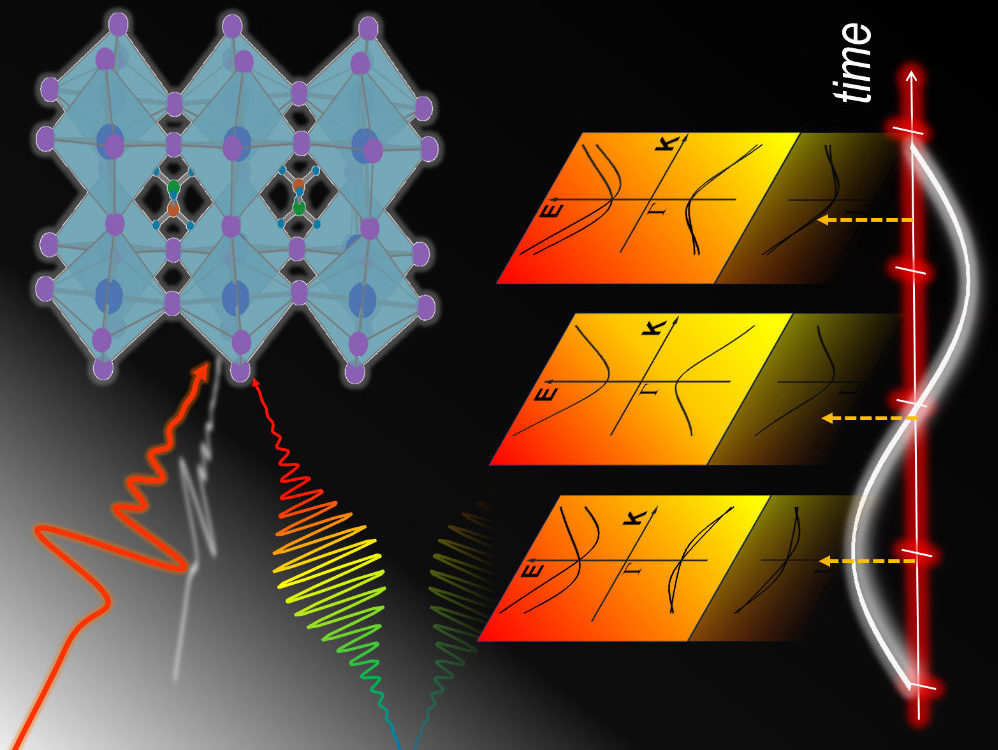Perovskites have attracted plenty of attention in recent years, with a string of discoveries and achievements demonstrating the apparent potential for the material to be used in low-cost, high-efficiency solar cells as well as LEDs and other devices.
Even as researchers demonstrate ever more efficient and reliable perovskite devices, however, debate has continued about the molecular properties of perovskites and the chemical explanation of why the structure lends itself so well to solar cell application. Understanding the chemical building blocks and the mechanisms at work deep within the material could guide optimization for various purposes.
Scientists at Ames Laboratory in Iowa studied methylammonium lead iodide (CH3NH3PbI3) and devised a new method of delving into the material’s quantum behavior. That enabled them to prove the existence of a mechanism known as the Rashba effect, a phenomenon concerning momentum and the spin of electrons as they orbit the nucleus of an atom.
Proven
The method is described in the paper Ultrafast Control of Excitonic Rashba Fine Structure by Phonon Coherence in the Metal Halide Perovskite CH3NH3PbI3, published in Physical Review Letters.
The group used powerful bursts of light at trillions of cycles per second to induce quantum motion in the material, and a second burst of light to observe and record the motion.
“Our discovery settles the debate of the presence of Rashba effects: They do exist in bulk metal halide perovskite materials,” said Ames Lab senior scientist Jigang Wang. “By steering quantum motions of atoms and electrons to engineer Rashba split bands, we [achieved] a significant leap forward for the fundamental discovery of the effect which had been hidden by random local fluctuations.”
The Ames group said its discovery opens up further possibilities for researchers to harness Rashba effects using quantum control and ultra-fast engineering to influence the phenomenon. That could include optimizing materials for photovoltaic applications, according to Wang.
This content is protected by copyright and may not be reused. If you want to cooperate with us and would like to reuse some of our content, please contact: editors@pv-magazine.com.




Way out of my league. But I like the star trek sound of it.